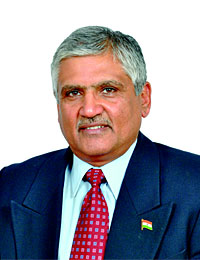Publisher’s Note
 Lubricants or lube oils are the lifeblood of every ‘oil-wetted’ machinery. Such is the importance that an engine cannot practically work without the presence of lube oil. Lube oil not only ensures the smooth & resistant free movement of the internal components of an engine by isolating all parts from each other, but it also carries out a number of other very critical tasks like lubrication, cooling, cleaning & sealing etc.
Lubricants or lube oils are the lifeblood of every ‘oil-wetted’ machinery. Such is the importance that an engine cannot practically work without the presence of lube oil. Lube oil not only ensures the smooth & resistant free movement of the internal components of an engine by isolating all parts from each other, but it also carries out a number of other very critical tasks like lubrication, cooling, cleaning & sealing etc.
While using good quality oil for your engine is important, no oil can retain its purity forever. The engine system is not a closed-loop network where you would pump the oil once and forget about it. Rather, the oil is prone to contamination through various internal and external sources which can introduce impurities into the oil. The internal sources form the majority of oil degraders due to impurities released from activities such as combustion, wear and the breakdown of hydrocarbons in the oil.
Now to remove these contaminants, we would need a suitable filter. This is a seemingly simple question with seemingly simple answers. The problem however is because so many different products exist in the marketplace, either confusion abounds or there is an attempt to oversimplify in order to cut through the confusion. The answer to the question is simple enough – filtration is using some method to remove suspended contamination from oil for either the protection of equipment (screening) or extending the life of the oil (cleaning). The solutions to oil filtration are not so simple and that’s where the confusion begins.
Over the years, dozens of articles have been written on the use of filter carts for decontaminating new and in-service oil. For years, hydraulic shops and parts suppliers have built and sold simple filtration systems made with components intended for hydraulic systems to be used on hydraulic fluid. It all makes sense.Take this hydraulic gear pump, use this hydraulic hose and attach these hydraulic filters, and you get a filter cart built with hydraulic components to filter hydraulic fluid. This has been happening for decades, and with great success. It's easy to clean hydraulic fluid. Its relatively low viscosity makes it easy to push through ultra-fine filtration.
The success on hydraulic systems was so great that people started to imagine what an offline system could do for critical gearboxes and other high-viscosity applications. In many cases, the same systems were used on lubrication systems. Although the fluid may have moved through the system, in most (if not all) cases, the high-viscosity fluid would have sent even a new filter into bypass, allowing the fluid to move through the system unfiltered.
One of the more common oversights consumers make about filter carts is the size of their filter, or more specifically, the available surface area of filtration media and the level of filtration the media can provide. All filters are not created equal, and the most efficient filters may be too fine to properly decontaminate your lubricant. Filters are designed so that the fluid to be pushed through the media is stripped of solid particles greater than the pore size of that particular media. As the fluid passes through the media, a pressure differential is created. Factors that influence the pressure differential across the filter media include media pore size, total media surface area, fluid viscosity and the amount of dirt already captured in the filter media.
Besides the Cover Story on Filters, there are other articles on lubricants and lubrication. Please let us have feedback on how you find the issues and your suggestions on topics you would like us to cover.
Meanwhile, keep safe and healthy,
Warm regards,
Udey Dhir
